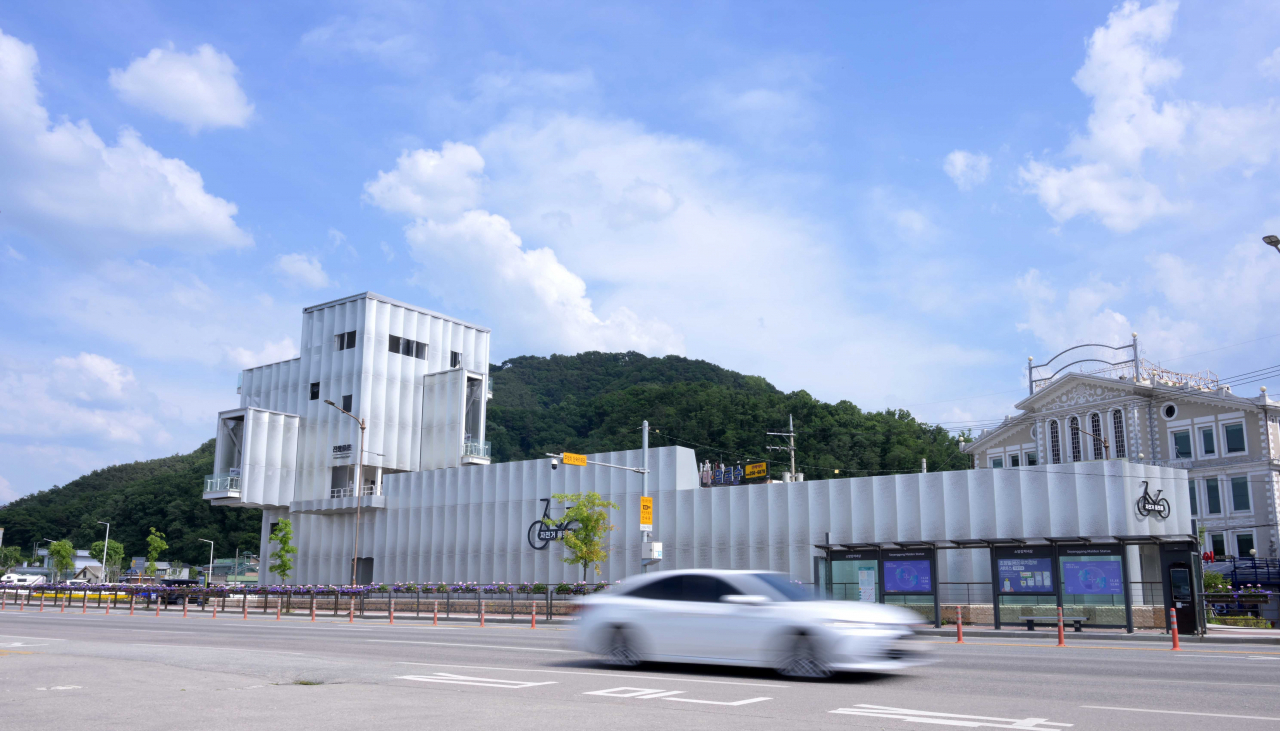 |
A view of the observatory and bicycle platform (Lee Sang-sub/ The Korea Herald) |
CHUNCHEON, Gangwon Province -- Approaching the observatory located across the street from the statue of the Maiden of Soyanggang on the Soyang River, one is struck by its height. The four-story structure is 20.4 meters tall.
If you had come expecting something taller – you would not have been wrong to expect something of a greater height since observatories are typically tall structures or situated at some height – you might wonder if you were at the right place.
Completed in March 2022, the observatory by Cheon Jang-hwan, a professor at Kyung Hee University's department of architecture and the head of Seoul-based Emer-Sys Design Lab, is deceptively unassuming.
Before joining the faculty of Kyung Hee University in 2012, Cheon worked and taught in the US after receiving a master of architecture degree from Columbia University.
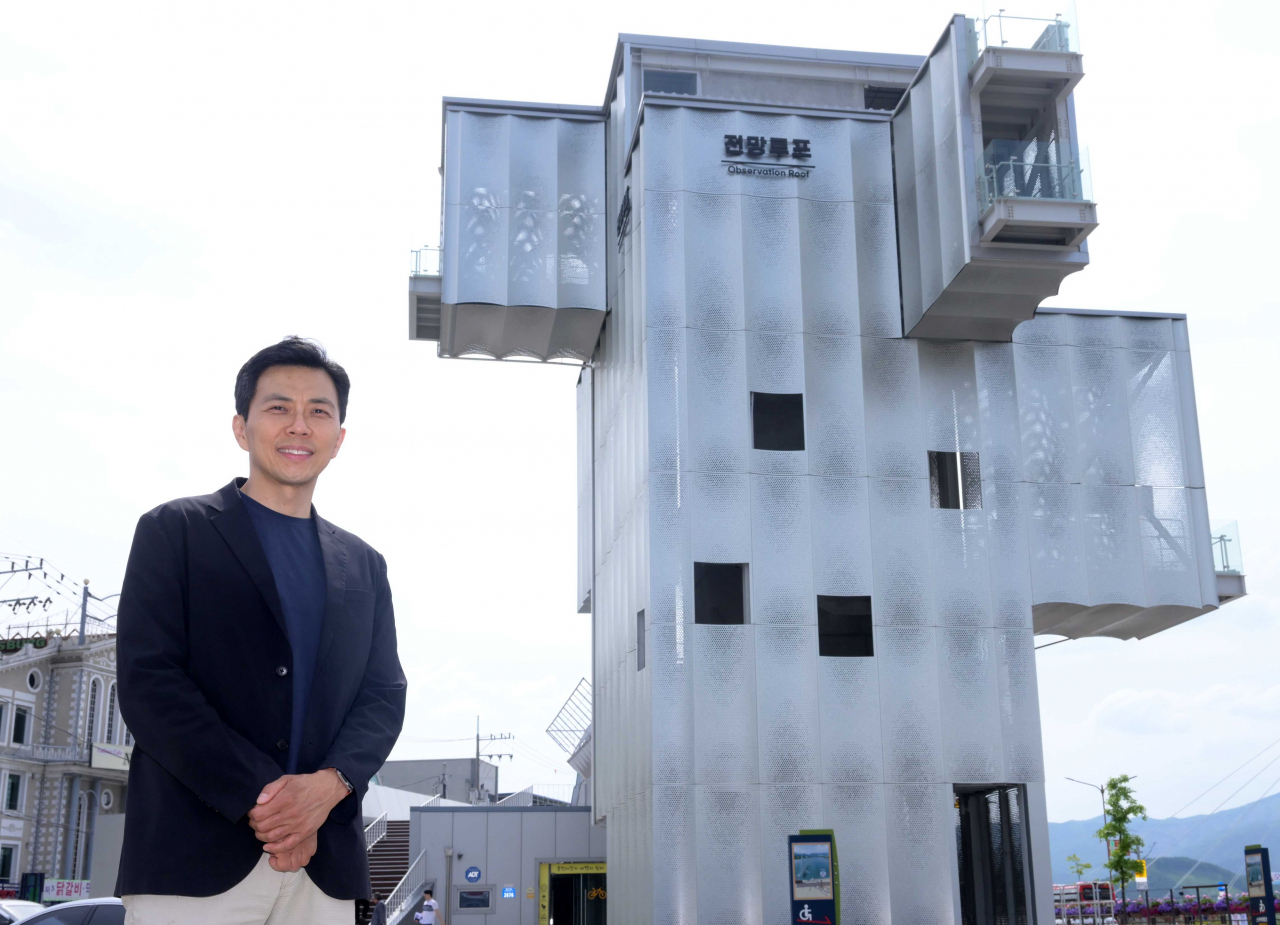 |
Cheon Jang-hwan stands in front of Thousand Plateaus, an observatory in Chuncheon. (Lee Sang-sub/ The Korea Herald) |
Named “Thousand Plateaus,” the observatory is situated next to a bicycle platform, a building that was completed two years earlier as part of Chuncheon’s urban regeneration program. The bicycle platform was aimed at getting cyclists from around the country to stop at Chuncheon rather than just whizzing by.
Of the numerous bike paths built during the Lee Myung-bak administration, those in Chuncheon are some of the most scenic, and the city wanted to take advantage of the large number of cyclists passing through.
The motive for the building was largely economic: Encourage the cyclists to stop at Chuncheon to eat and do some sightseeing, i.e., spend some money in the city.
The cyclists, most of them in their 30s to 50s, do have the money to spend. But they do not want to park their expensive bikes – a single wheel could cost as much as a couple of million won – on the street. Give them a place to store their bikes, shower and change, and they might head into town to eat and look around. After all, the area does not lack for restaurants serving dakgalbi, a Chuncheon specialty of spicy pan-fried chicken and vegetables.
The premise seemed sound until it proved otherwise. When the building was completed and turned over to the area residents to be managed, things took a different turn. It eventually became a training center for the neighborhood cycling club. The envisioned special bicycle lockers were replaced by something more pedestrian. There is no lounge area where tired cyclists can relax. The restaurants in the area, truth be told, have seen better days. All in all, there is nothing to persuade the cyclists to get off their seats.
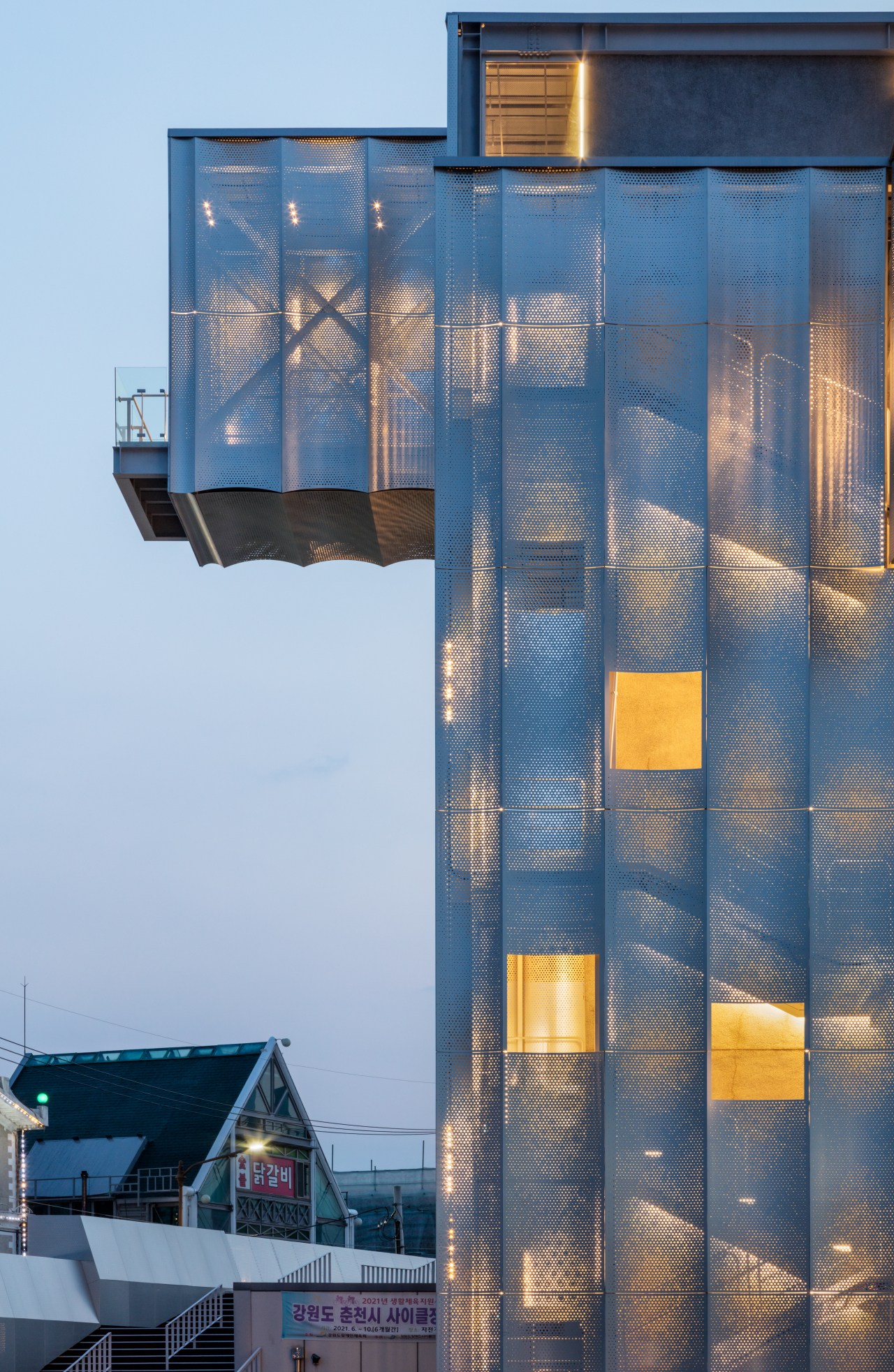 |
A view of the observatory at night (Shin Kyung-sub) |
Then came the idea for an observatory. The residents, who are very proud of the sunset view that can be observed in the area, were confident that people would come to see the sun set over the gently flowing river. The hope was that an observatory would thus revive the bicycle facility and create synergy with the nearby Soyanggang Skywalk and the statue of the Maiden of Soyanggang to revive the old neighborhood in decline.
However, not everyone was on board with the plan for yet another structure that would obstruct the panoramic view of the river, especially restaurant owners who opposed to having their views blocked.
The city’s missive for the observatory was that it be connected to the existing bicycle platform. It also limited the height of the observatory to 20 meters. Cheon’s winning bid envisioned the two structures sharing the same open ground and connected through the bicycle platform’s roof deck.
To create a sense of integration of the two separate structures, Cheon clad the bicycle platform in the same curved aluminum panels with perforations that were used in building the observatory. The tiny perforations varying in size from 0.5 to 3 centimeters in diameter play a trick on the eyes. Depending on the angle from which you are viewing them, the holes can seem either open or closed.
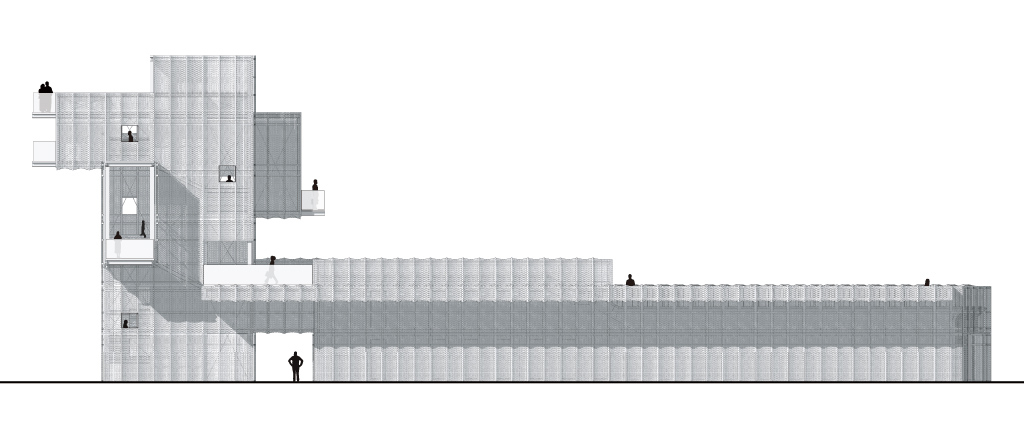 |
Drawing of the observatory and bicycle platform (Emer-Sys Design Lab) |
Cheon’s goal was an unobtrusive structure that would reflect its surroundings. “Not a complete reflection like a mirror, but a subtle reflection. I thought this would diminish the structure’s presence,” Cheon said in an interview with The Korea Herald in May.
The curved panels also create a feeling of gentleness and the fewer support structures required for the curve panels results in an overall feeling of lightness.
“Despite its height and volume, the building is not unpleasant because of the subtle reflection,” Cheon said. Cheon just might have read the minds of the residents in creating such an unassuming building.
At night, however, the observatory takes on a life of its own. Glowing from the inside and emitting warm light through the tiny holes, “Thousand Plateaus” demands attention.
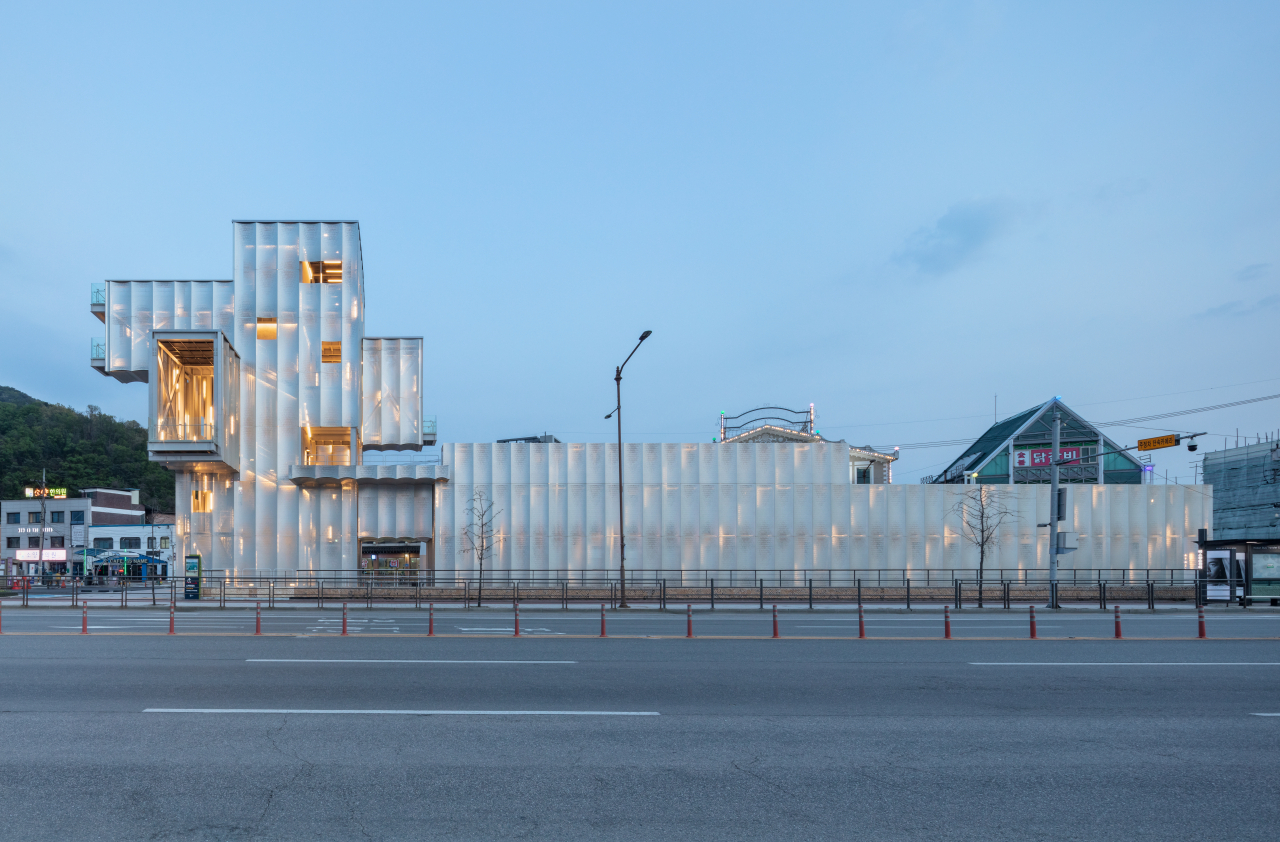 |
A view of the observatory and bicycle platform at night (Shin Kyung-sub) |
The observatory offers varying viewing experiences. Looking out through the small openings at different heights and different directions creates an illusion of looking at a framed picture. Stand on an open deck at the end of one of the balconies that jut out from the structure and you will feel as if you were part of the scenery.
“I think it would be right to say ‘form follows experience,’” Cheon said about his design principle for the observatory. “Physically expressing the method of experiencing the surrounding scenery while going up an observatory resulted in the current form of the observatory,” Cheon said.
“I think it is meaningful to give the public this kind of vista for free,” said Cheon. The observatory is easily accessible. “People can just walk onto it while on a stroll around the neighborhood.”
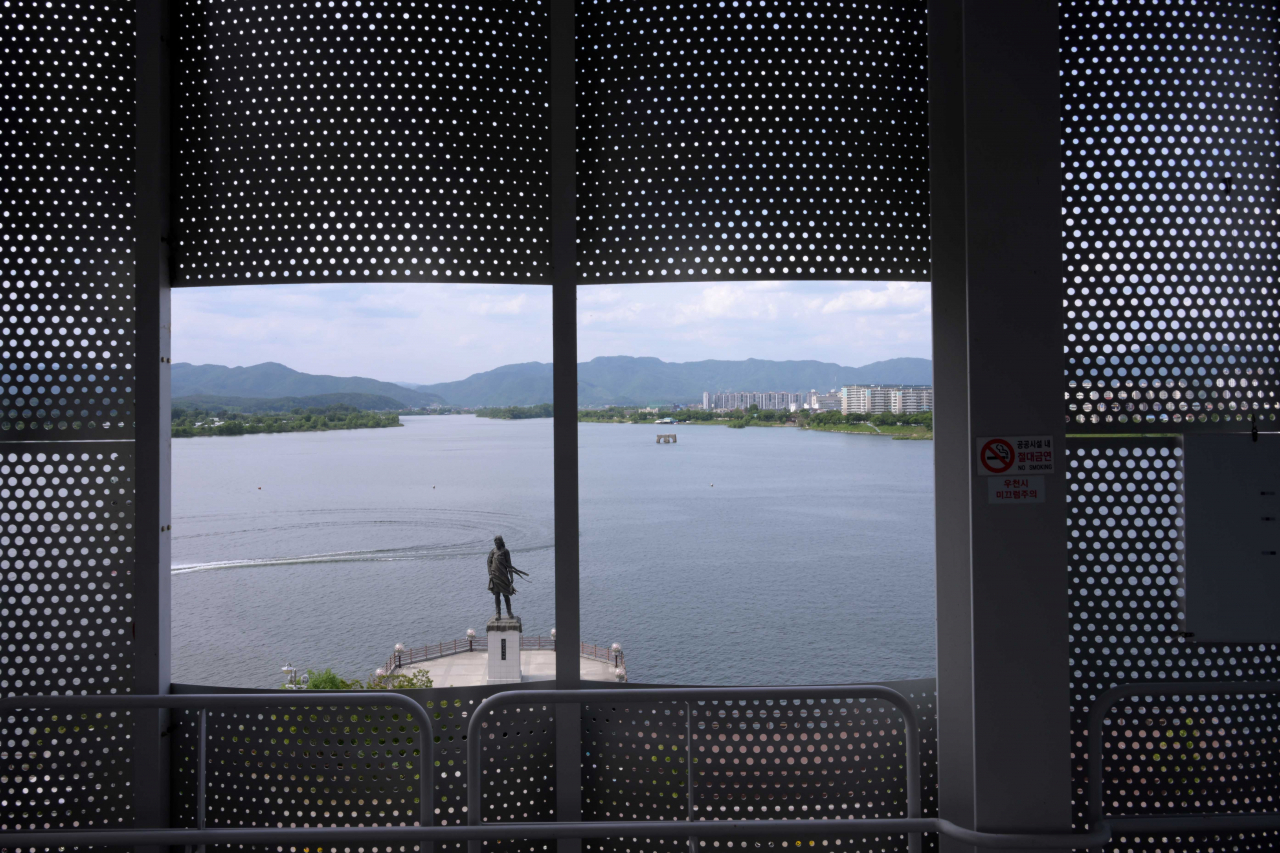 |
An opening looks out to the statue of Maiden of Soyanggang. (Lee Sang-sub/ The Korea Herald) |
"I wanted to create a feeling of luxury for the users,” he said. “That feeling will translate into a better quality of life."
Cheon, who visited the site some 80 times during the planning and construction stages, believes the success of public architecture hinges on programming. Meanwhile, for a programming to be successful, there needs to be a sense of ownership on the part of the public and the civil servants involved, he explained.
“I really do want the building to be a success,” he said, explaining his interest in programming, although that is not part of an architect’s mission. “Even a little gesture, like creating shade on the roof deck using large plants will get people to come. Right now, it is too empty,” he said, adding that he has made a number of suggestions to the city officials, which so far appears to have fallen on deaf ears.
Cheon advocates using high-quality materials as much as possible, even in public buildings that often must be built on a tight budget. “There must be a change in public consciousness. Spending money on public architecture and building high-quality public buildings will raise the quality of society,” he said.
--
This is the fourth article in a seven-part series exploring the role and impact of public architecture in civic life. — Ed.







